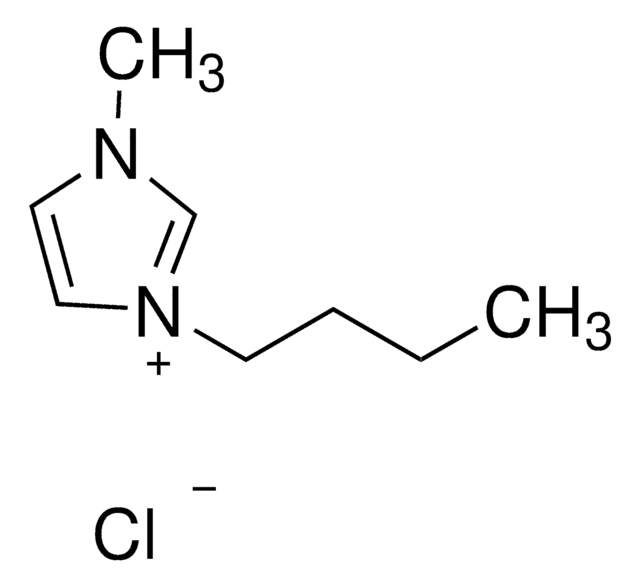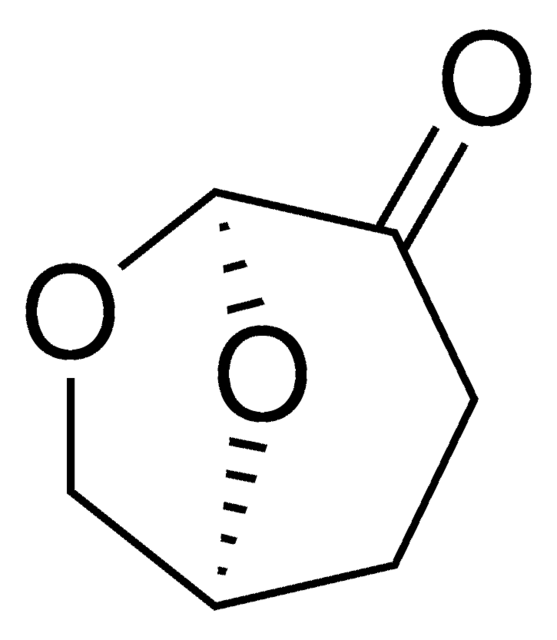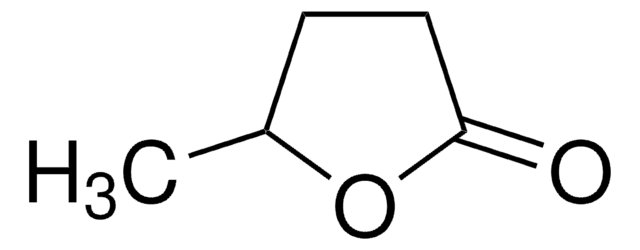901351
1-butanolo
BioRenewable, ACS reagent, ≥99.4%
Sinonimo/i:
n-butanolo, Alcol butilico
About This Item
Prodotti consigliati
Grado
ACS reagent
Livello qualitativo
Densità del vapore
2.55 (vs air)
Saggio
≥99.4%
Stato
liquid
Temp. autoaccensione
649 °F
Limite di esplosione
11.2 %
Caratteristiche più verdi
Safer Solvents and Auxiliaries
Use of Renewable Feedstocks
Learn more about the Principles of Green Chemistry.
sustainability
Greener Alternative Product
renewable carbon content
100%
dilution
(for analytical testing)
Impurezze
≤0.0008 meq/g Titr. acid
≤0.01% butyraldehyde
≤0.1% water
≤0.2% butyl ether
Residuo dopo evaporazione
≤0.005%
Colore
APHA: ≤10
Indice di rifrazione
n20/D 1.399 (lit.)
P. ebollizione
116-118 °C (lit.)
Punto di fusione
−90 °C (lit.)
Densità
0.81 g/mL at 25 °C (lit.)
Categoria alternativa più verde
, Aligned
Stringa SMILE
CCCCO
InChI
1S/C4H10O/c1-2-3-4-5/h5H,2-4H2,1H3
LRHPLDYGYMQRHN-UHFFFAOYSA-N
Cerchi prodotti simili? Visita Guida al confronto tra prodotti
Descrizione generale
This ACS grade 1-Butanol is a drop-in replacement for traditional 1-Butanol applications. Made from 100% renewable carbon (verified through C14 ASTM D6866-16 testing) and produced in an environmentally-friendly way which reduces the carbon footprint of production and reduces reliance on fossil-fuels.
It is also free from many contaminants that are present in petroleum derived 1-Butanol, such as isobutanol and aldehydes.
Applicazioni
1-Butanol may be used in applications such as:
- Extraction and purification of compounds
- Solvent in chemical synthesis
- Intermediate in polymer synthesis
- Adhesives and sealants formulation
- Coatings
Caratteristiche e vantaggi
- ASTM D6866 - Standard Test Methods for Determining the Biobased Content
- Renewable Carbon Content – ≥99.9%
- Made from Renewable Resource
- Replacement for Petroleum-based 1-Butanol
Prodotti correlati
Avvertenze
Danger
Indicazioni di pericolo
Consigli di prudenza
Classi di pericolo
Acute Tox. 4 Oral - Eye Dam. 1 - Flam. Liq. 3 - Skin Irrit. 2 - STOT SE 3
Organi bersaglio
Central nervous system, Respiratory system
Codice della classe di stoccaggio
3 - Flammable liquids
Classe di pericolosità dell'acqua (WGK)
WGK 1
Punto d’infiammabilità (°F)
95.0 °F - Pensky-Martens closed cup
Punto d’infiammabilità (°C)
35 °C - Pensky-Martens closed cup
Elenchi normativi
Forniamo informazioni su eventuali restrizioni prevalentemente per i prodotti chimici. Per altre tipologie di prodotto siamo in grado di fornire soltanto informazioni limitate. Nessuna segnalazione significa che nessuno dei componenti è citato in un elenco. È dovere dell’utilizzatore assicurarsi che il prodotto venga impiegato in maniera sicura e a norme di legge.
EU REACH Annex XVII (Restriction List)
Scegli una delle versioni più recenti:
Certificati d'analisi (COA)
Non trovi la versione di tuo interesse?
Se hai bisogno di una versione specifica, puoi cercare il certificato tramite il numero di lotto.
Possiedi già questo prodotto?
I documenti relativi ai prodotti acquistati recentemente sono disponibili nell’Archivio dei documenti.
I clienti hanno visto anche
Il team dei nostri ricercatori vanta grande esperienza in tutte le aree della ricerca quali Life Science, scienza dei materiali, sintesi chimica, cromatografia, discipline analitiche, ecc..
Contatta l'Assistenza Tecnica.














